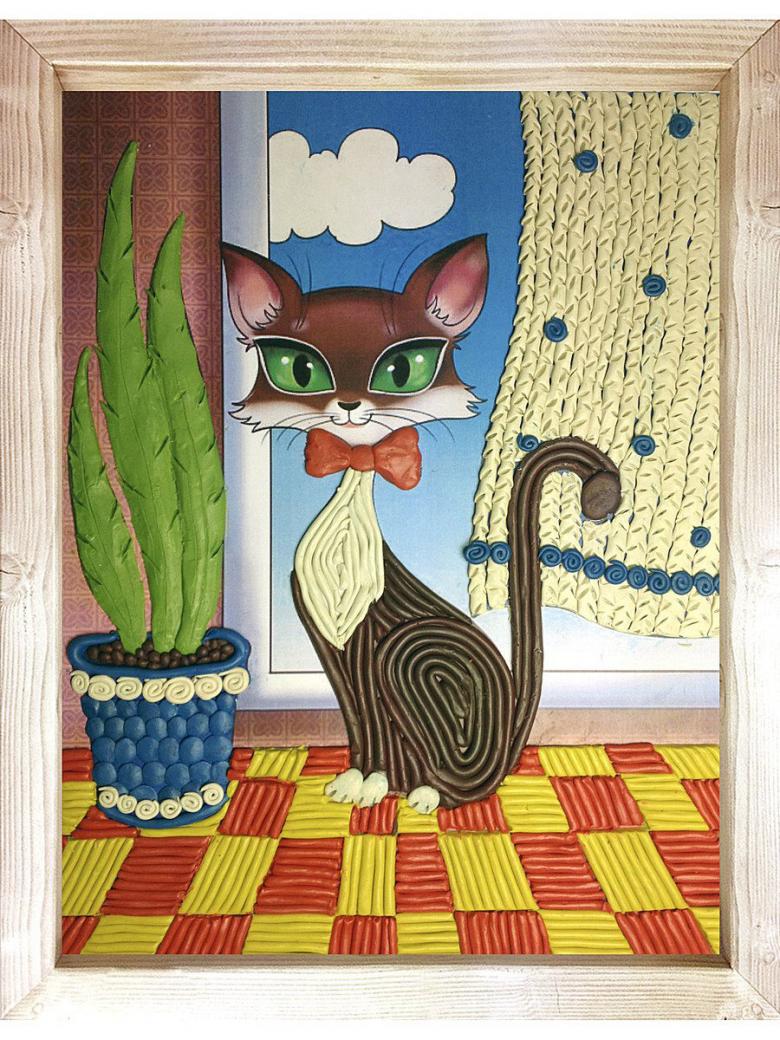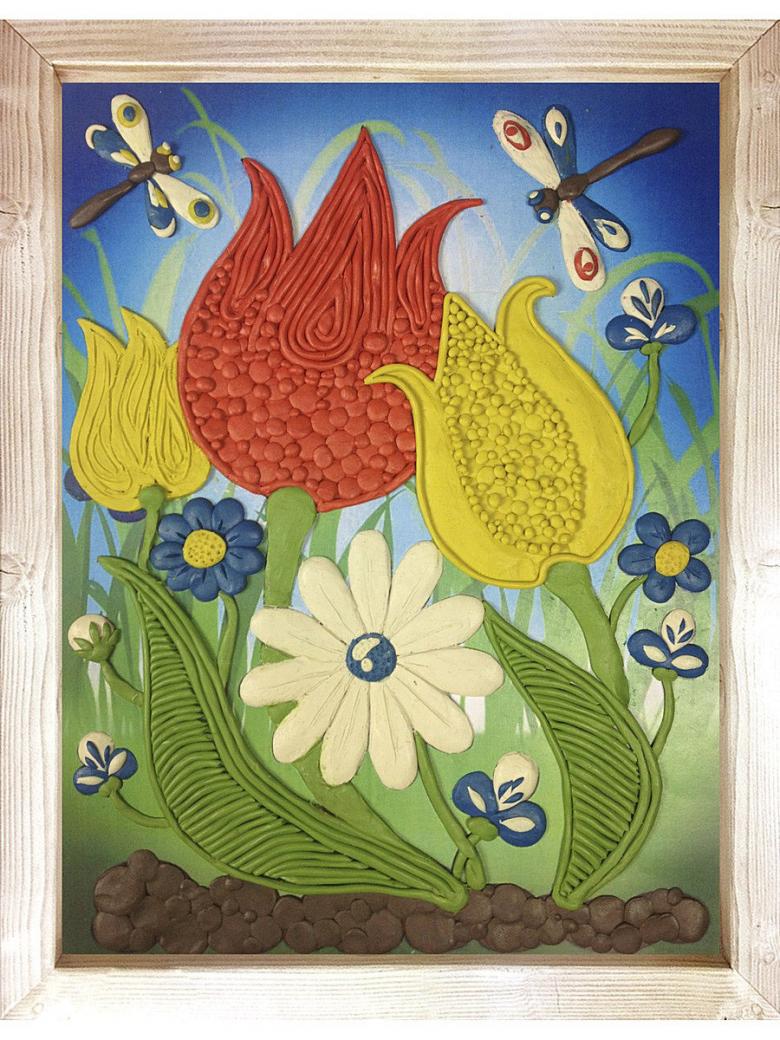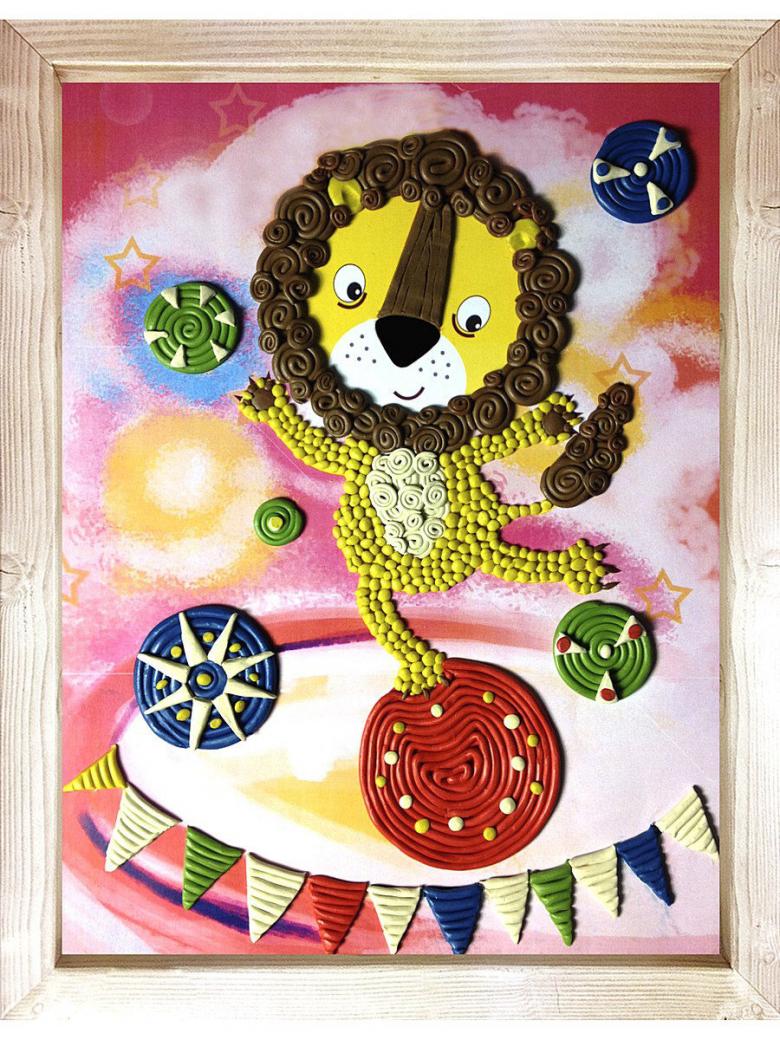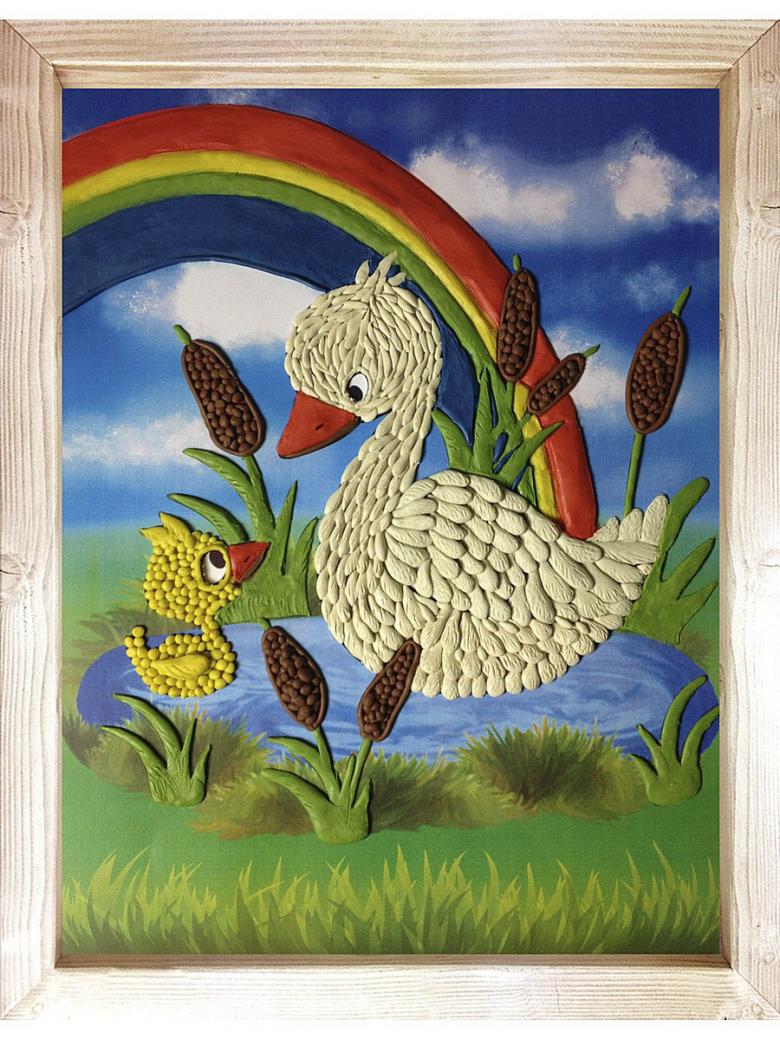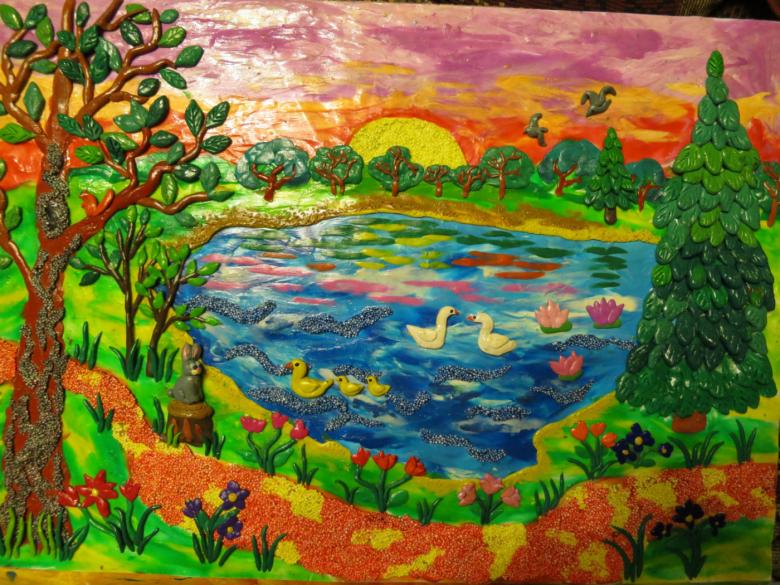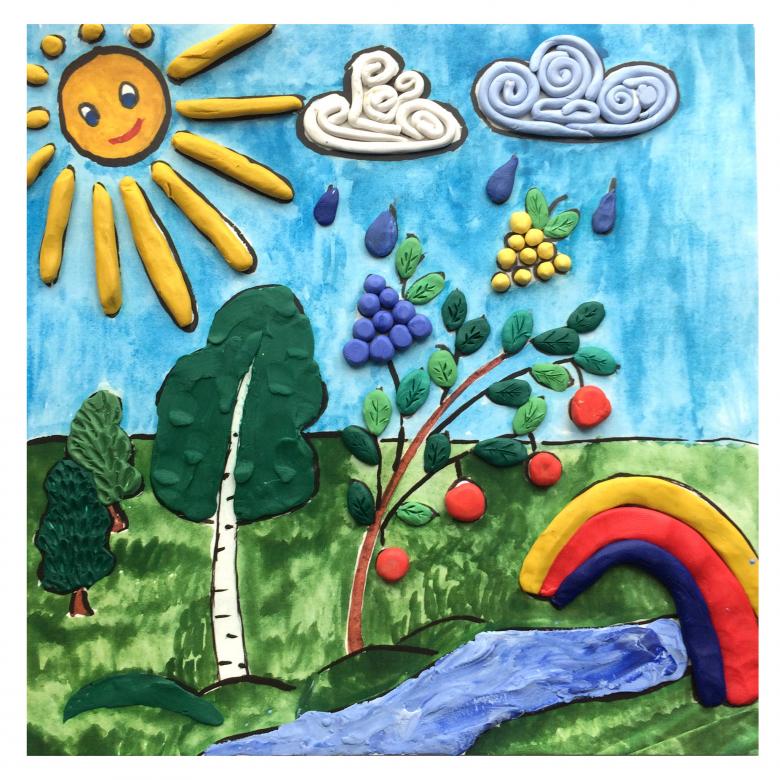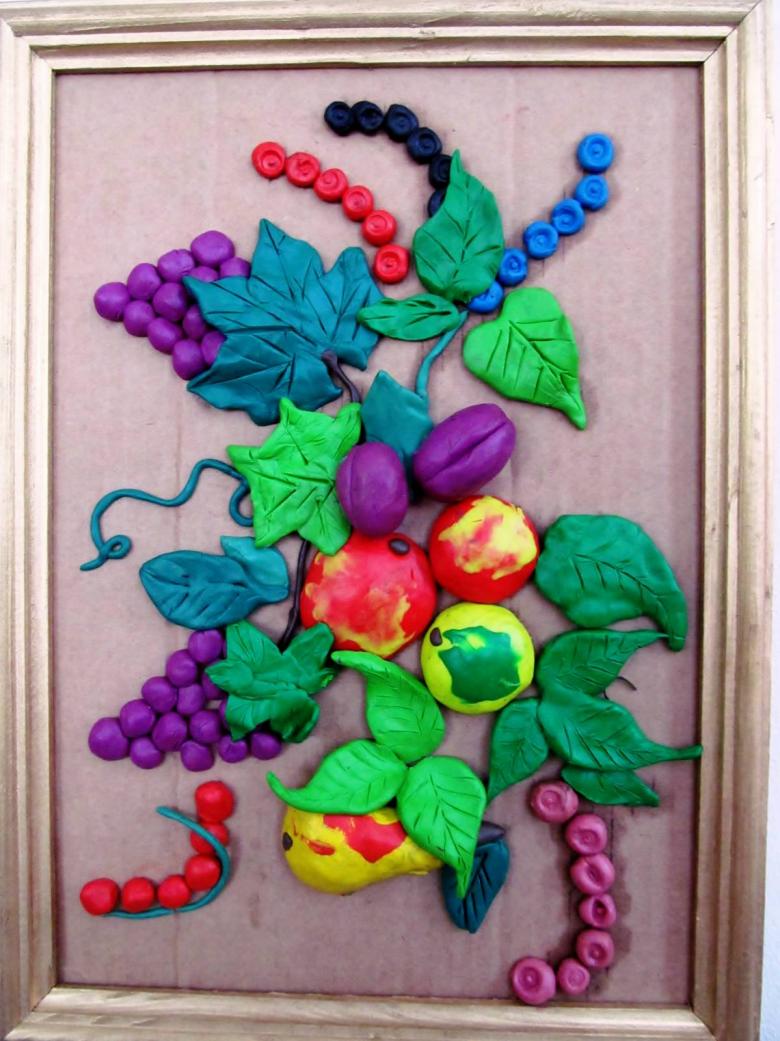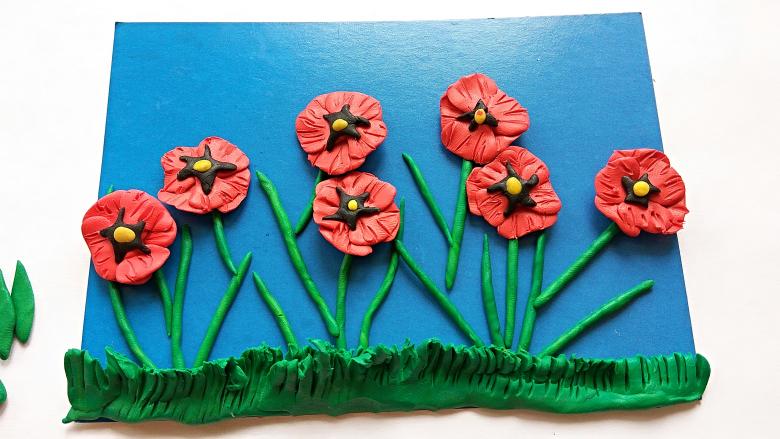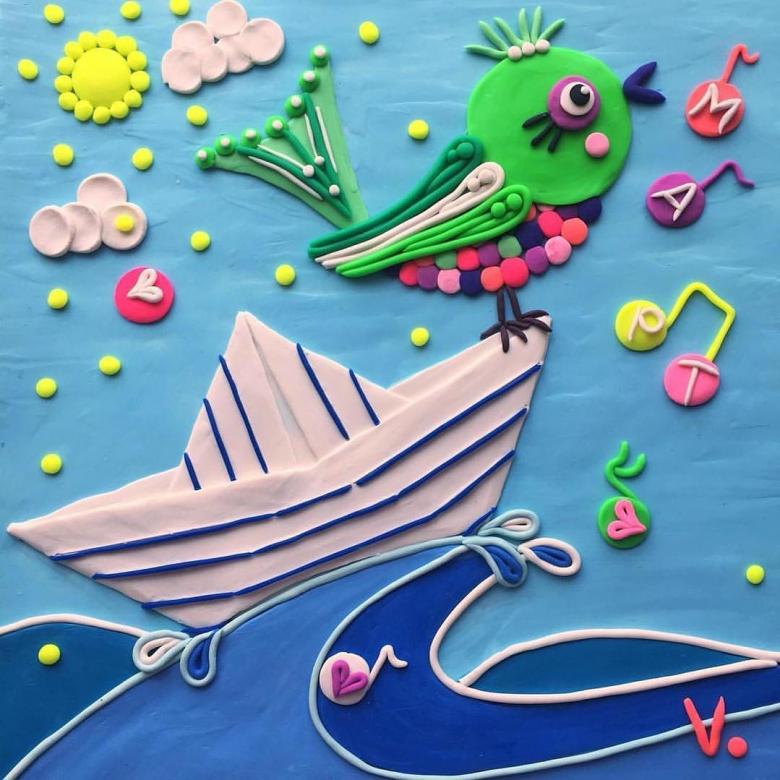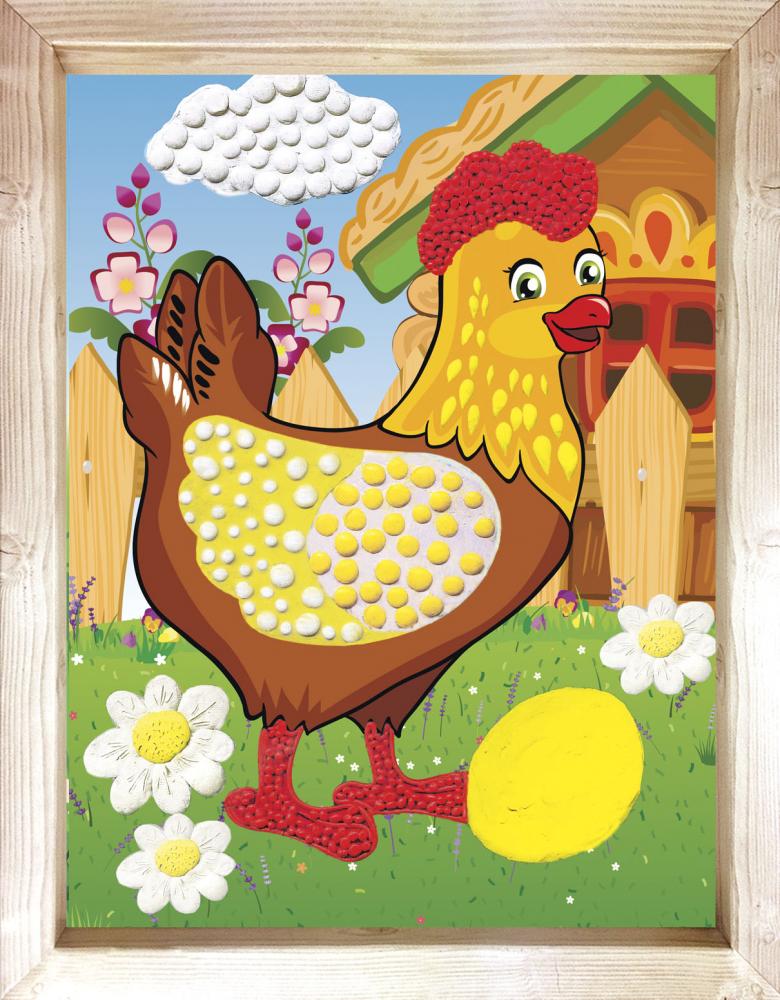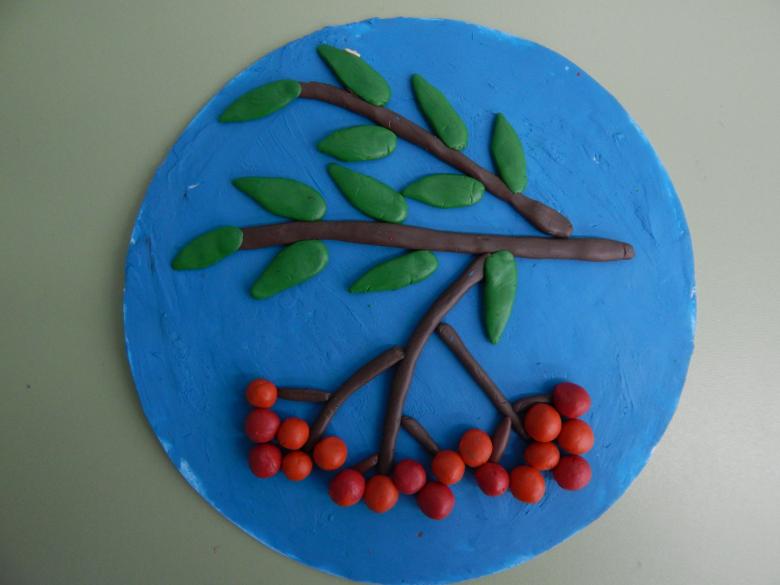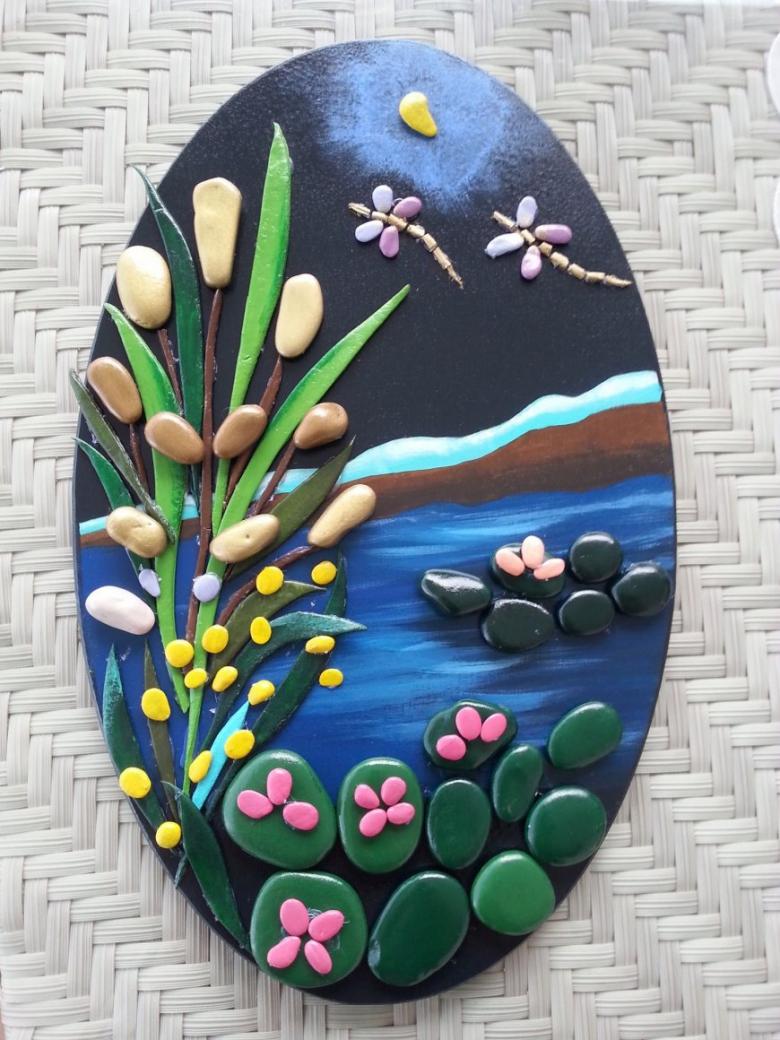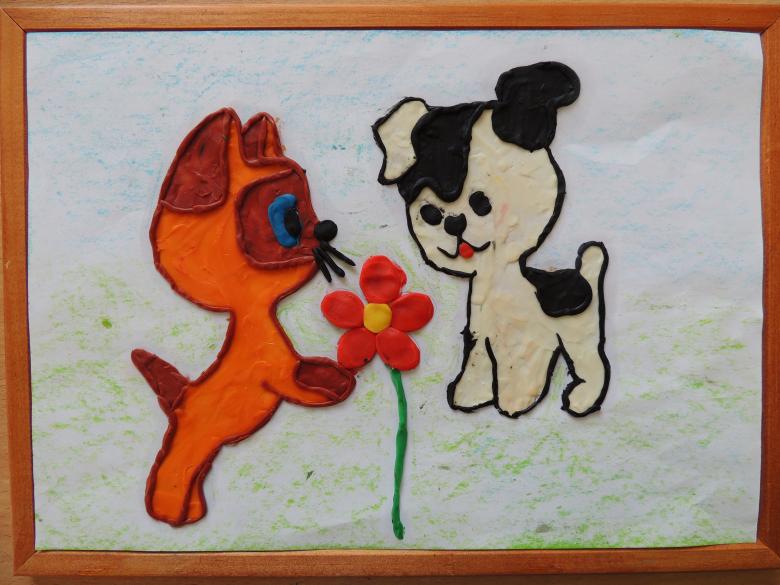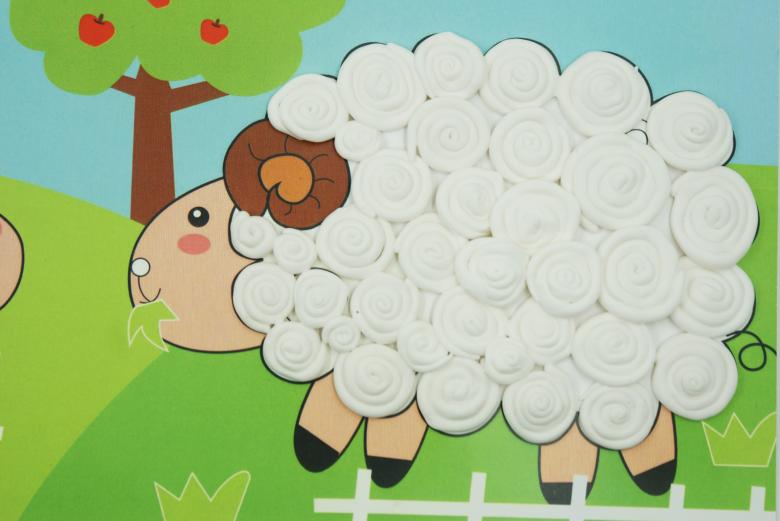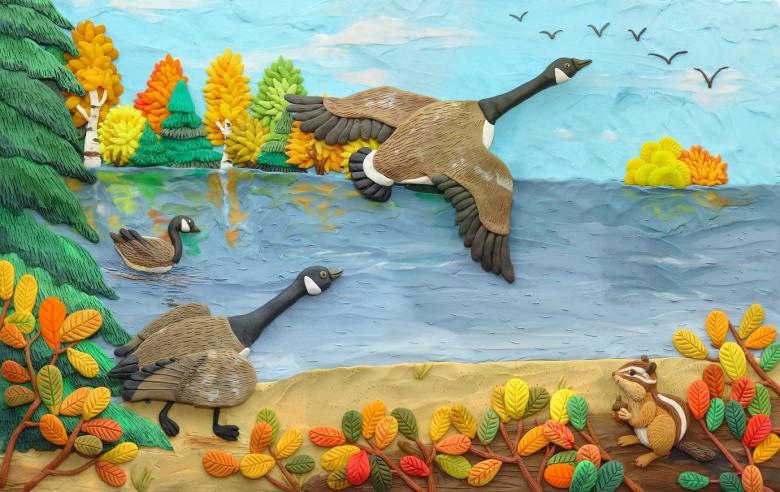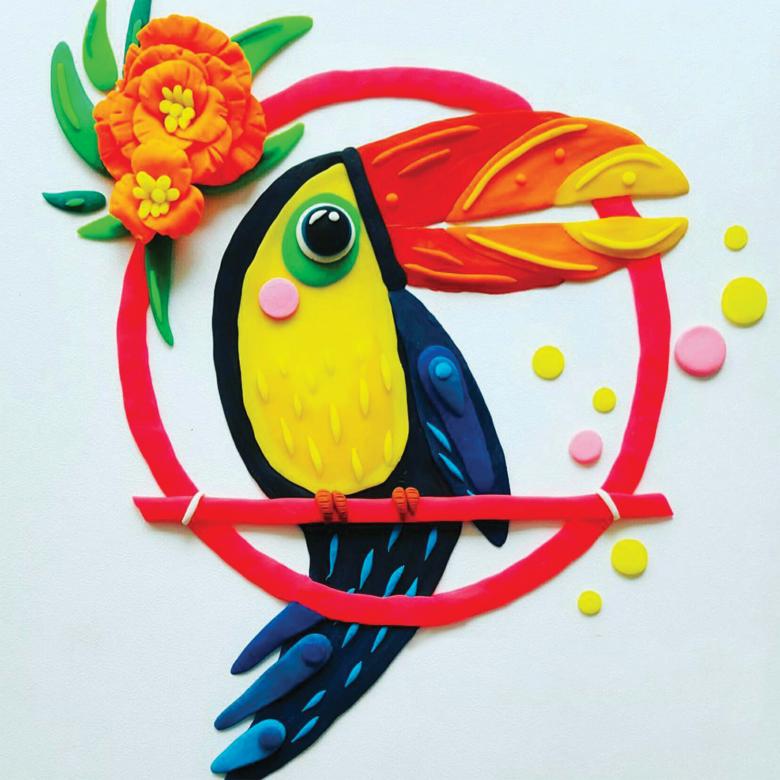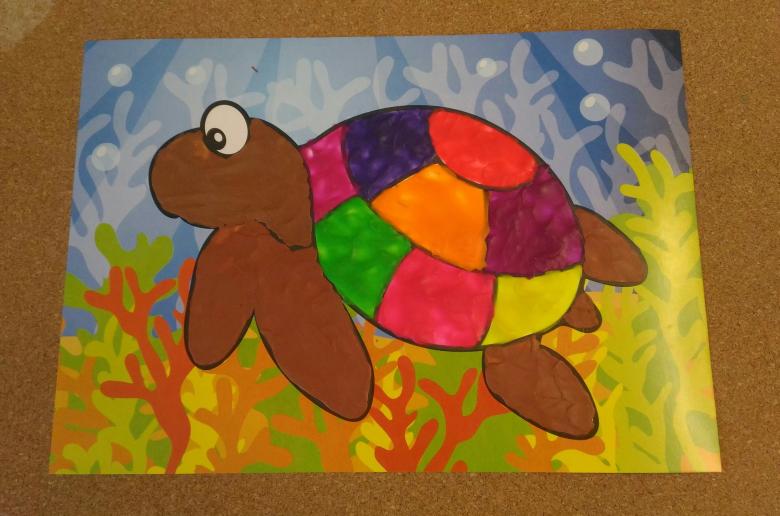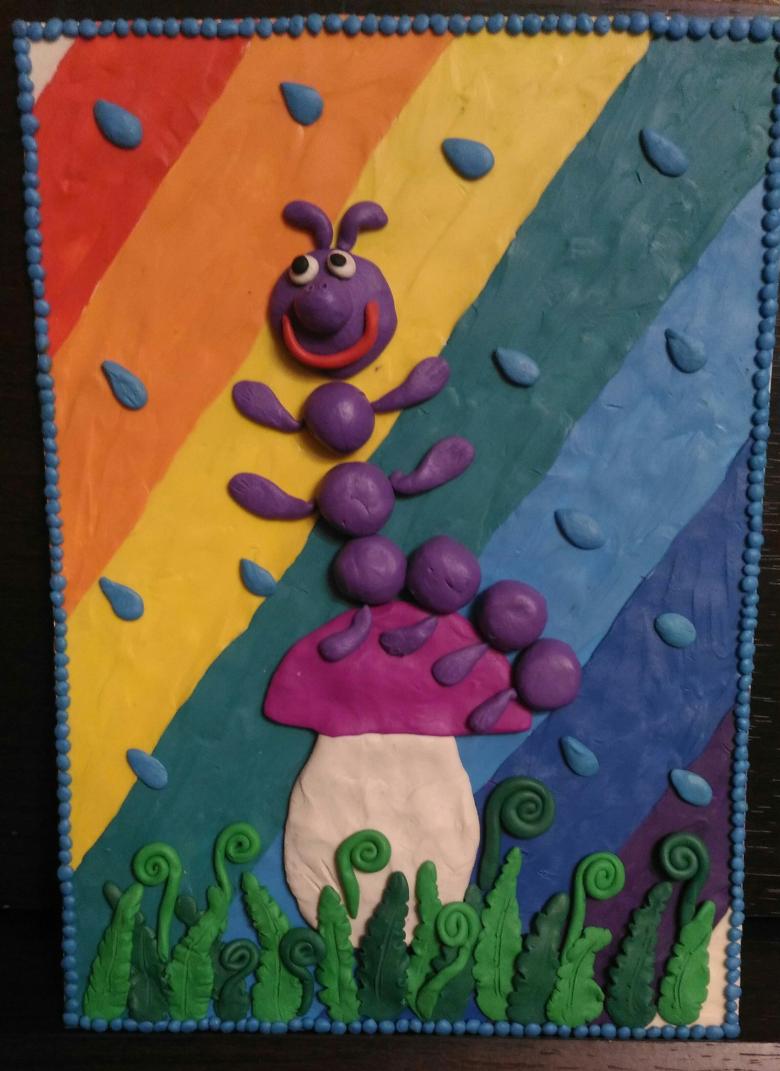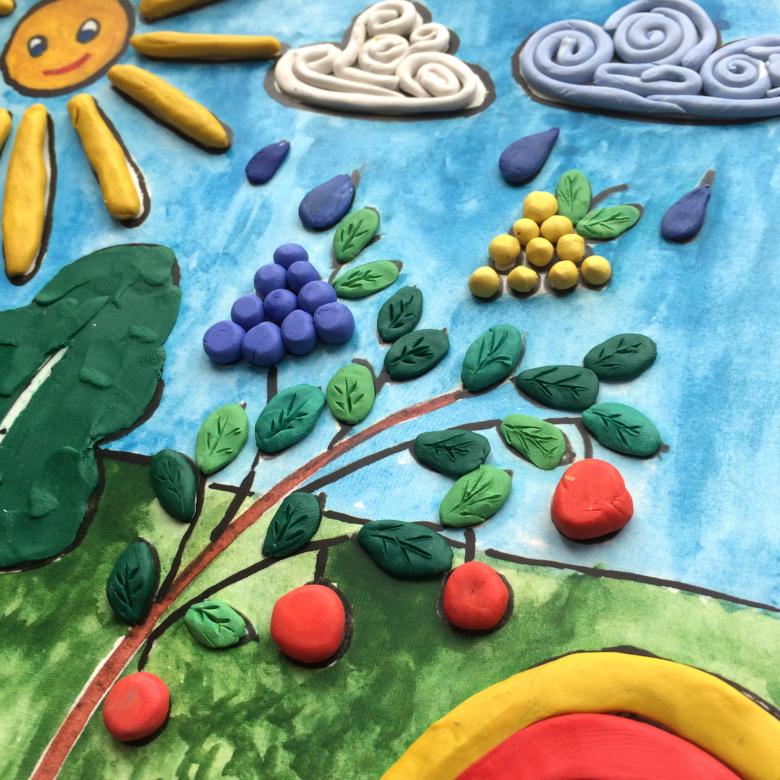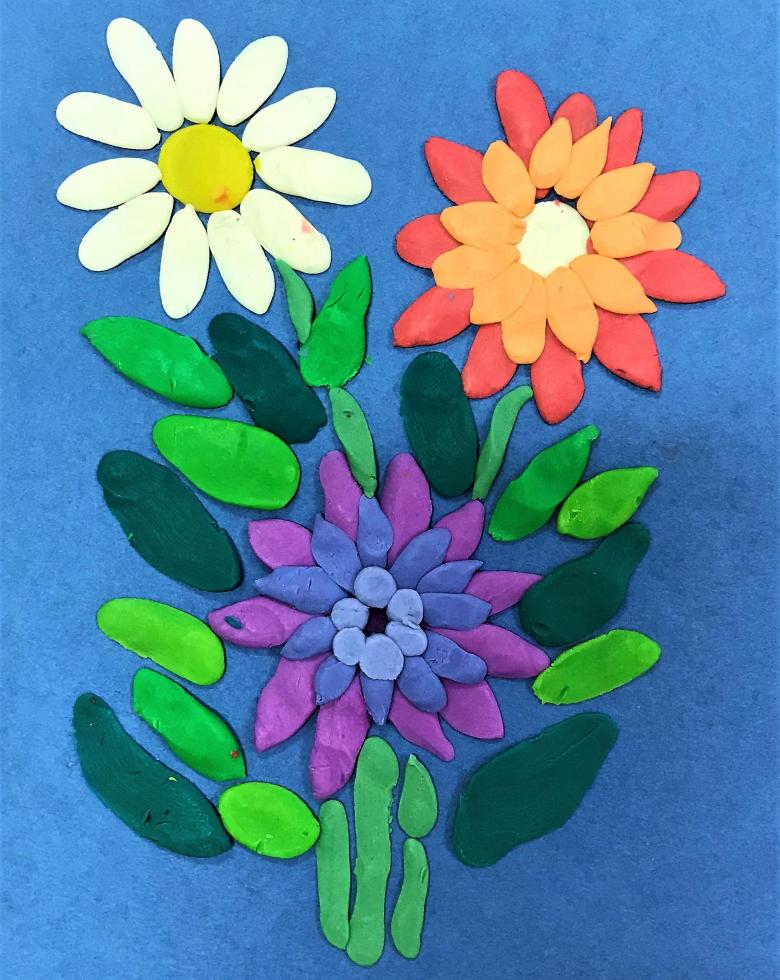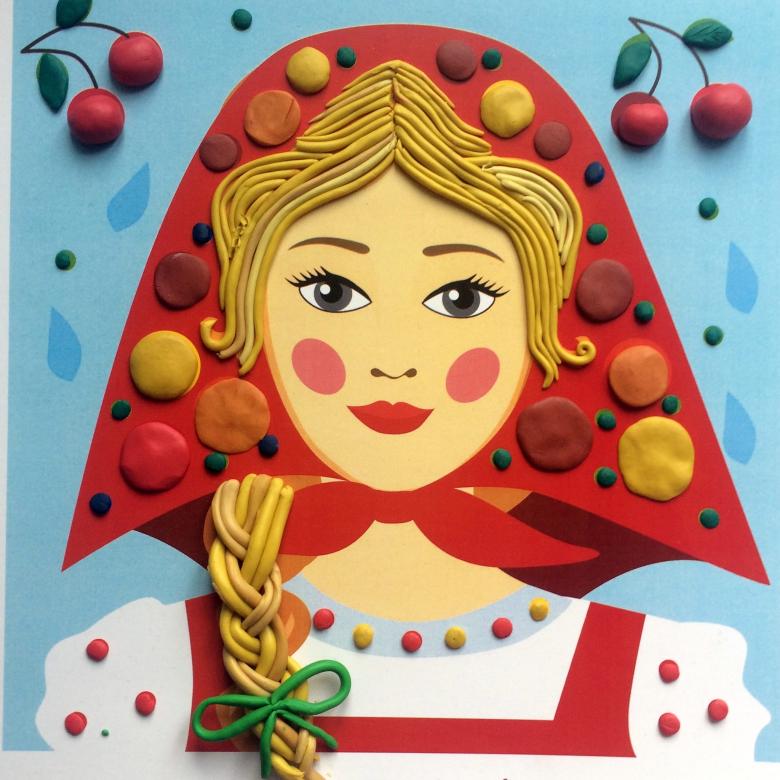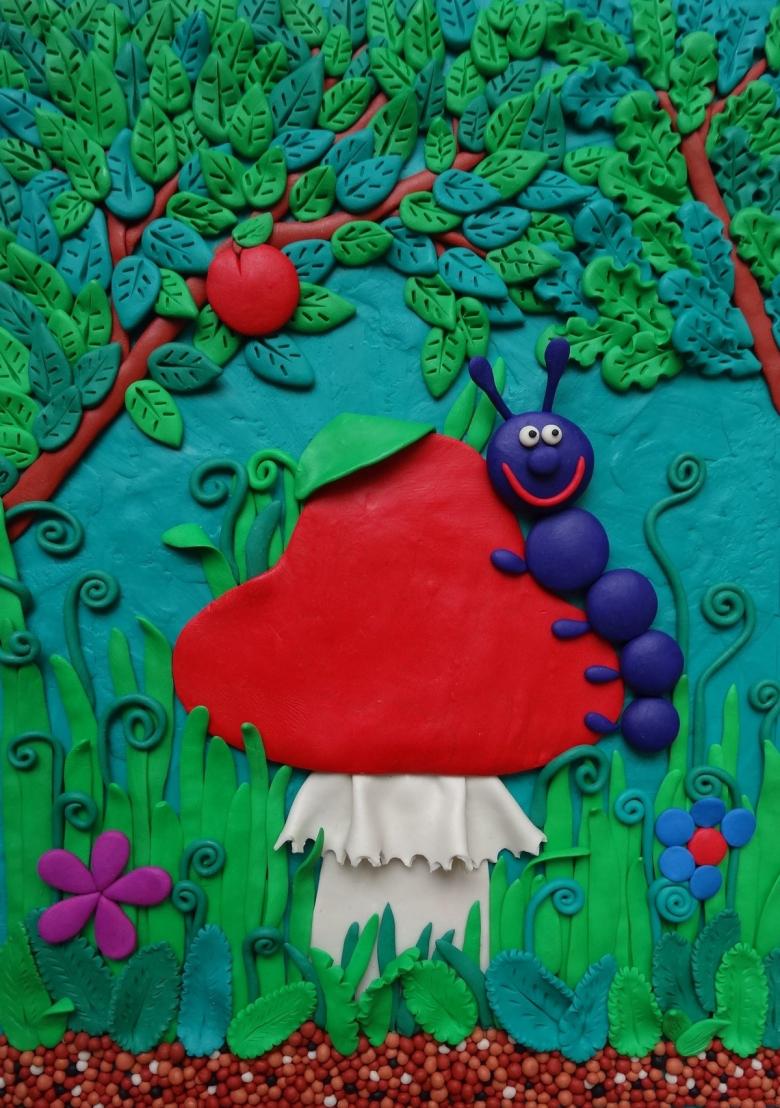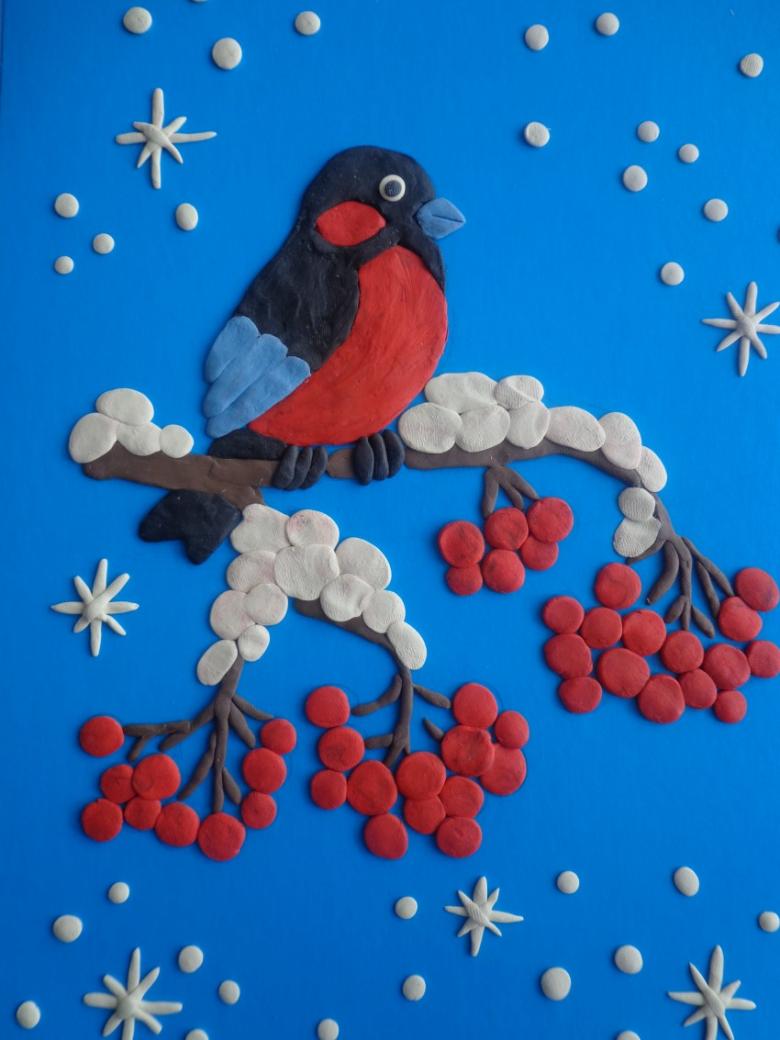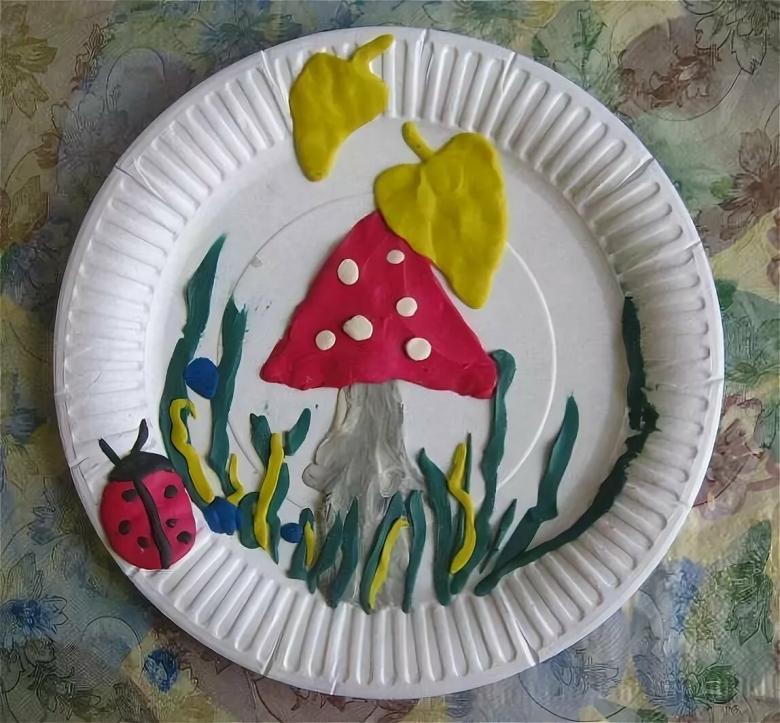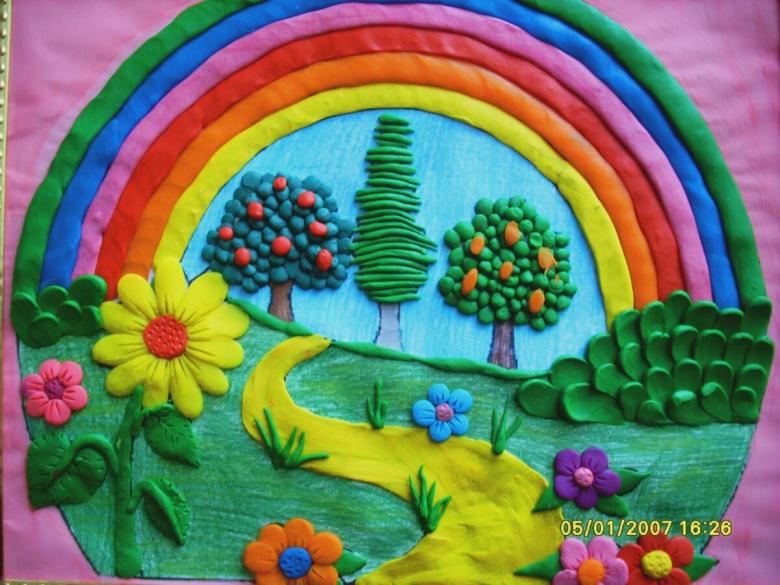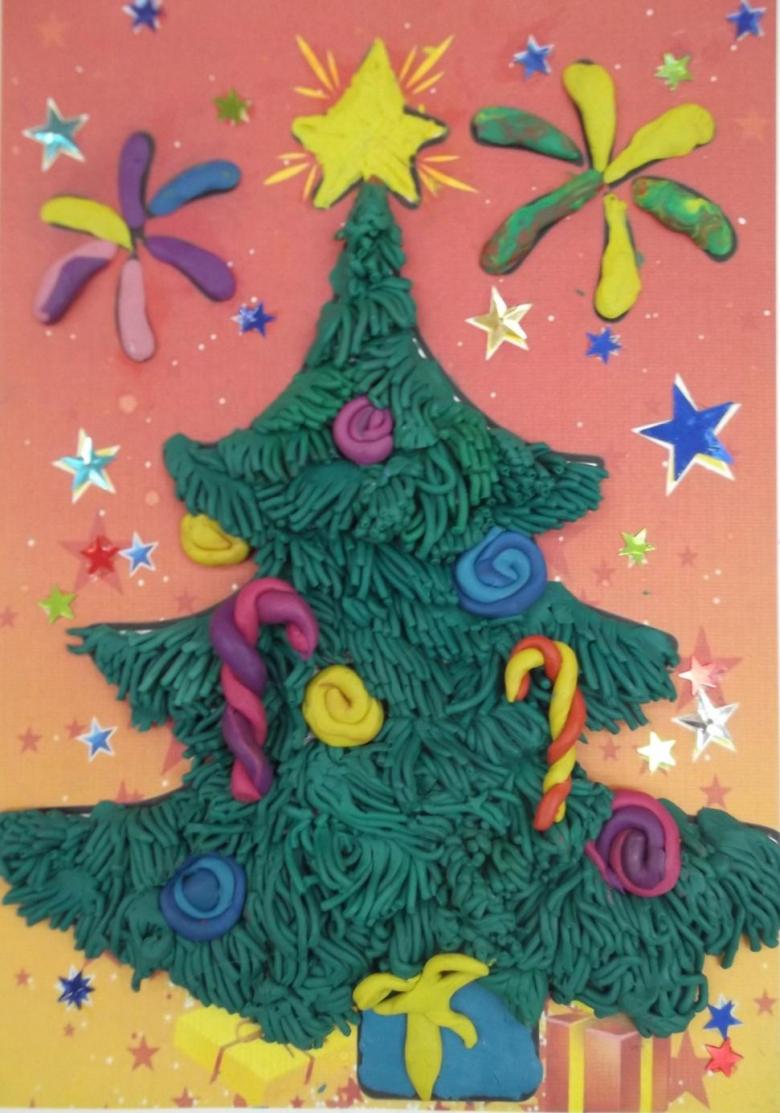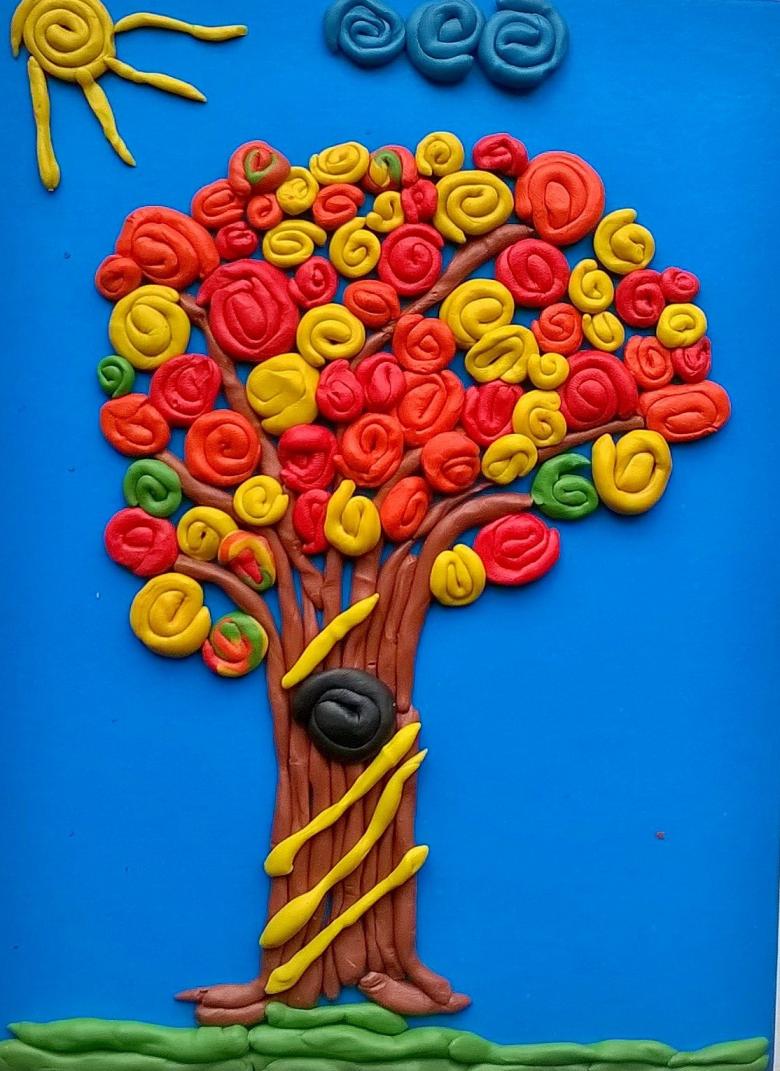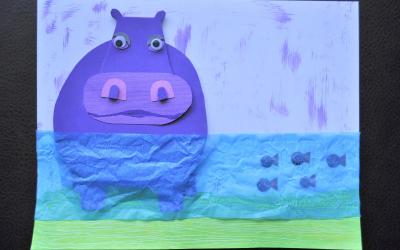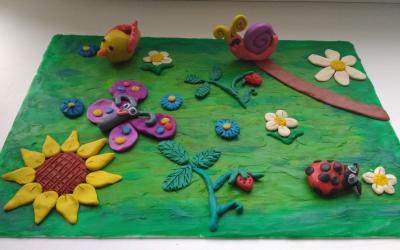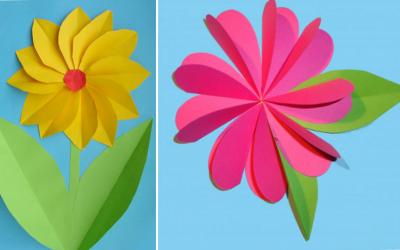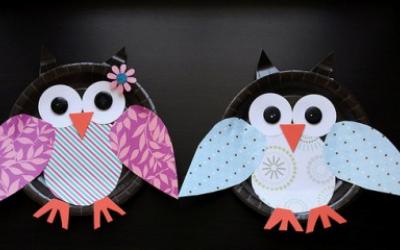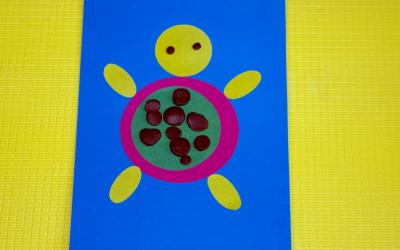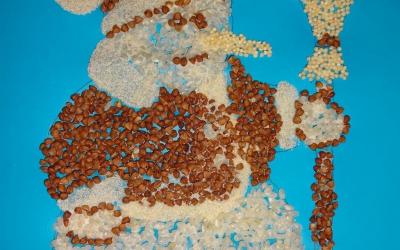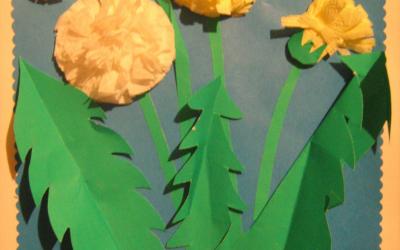Clay applique with their own hands - a description of techniques, useful tips, photo ideas
It is very easy to occupy a child with benefits, for this is enough to give him a coloring book and pencils, but this activity can bore him. Really captivate little restless kids with plasticine applique, which is easy to make, embodying a variety of images and compositions. The presented catalog of ideas will help you choose an interesting solution for the organization of children's leisure time and master the technique of creating interesting and unusual handicrafts to decorate the house.
Possibilities of using the techniques of applique for children
The formation of personality in children begins with the fact that each child forms his passions and displays creative abilities. According to psychologists, the development of fine motor skills helps quickly master the techniques of writing and reading, which is why plasticine is so popular:
- molding and repetition of familiar shapes, which helps to develop memory and consolidate new images, gradually studied by the child;
- Showing creativity and the opportunity to develop their individuality, creating original masterpieces;
- involvement of the fingertips and getting new tactile sensations, which stimulates the child's speech development.
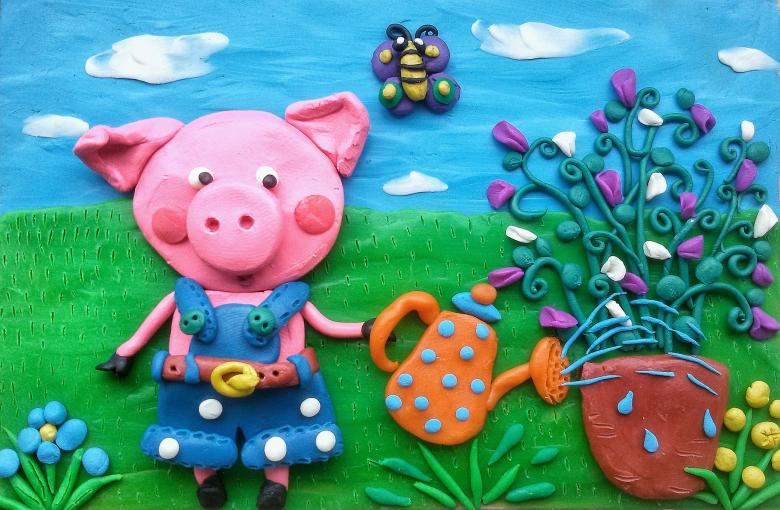
While creating applications, you can use needlework as an interesting and entertaining process of learning and speech development for your child. Using clay, you can reproduce beautiful postcards and commemorative photos, select and implement original and exciting ideas for children.

Clay applications: basic techniques and ideas
Developing the imagination and fantasy of a child in the early years of preschool life develops rapidly, but even they need a certain stimulus. Beautiful and unusual handicrafts, applications from plasticine on cardboard can be used to decorate the house or at children's exhibitions.
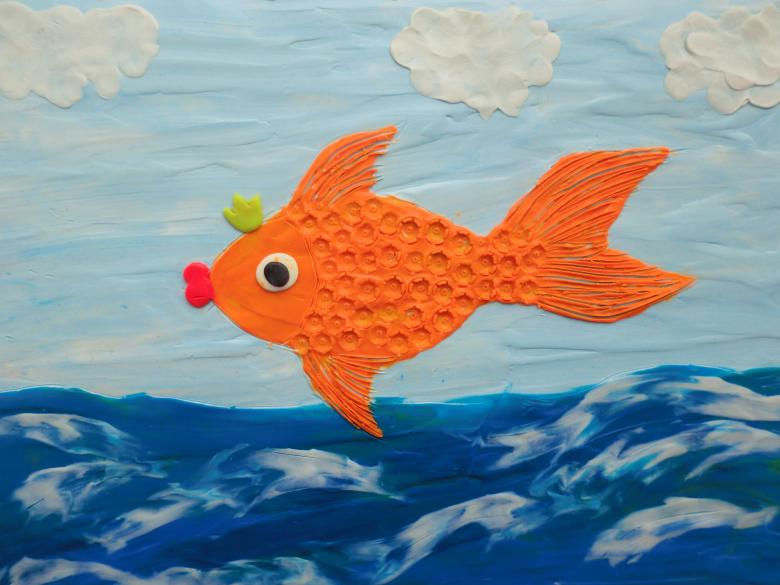
Simple and easy molding will not take much time and help diversify preparation for school and the learning process. For the realization of any idea, you can use different techniques that are accessible to children and adults, they are not difficult to implement and do not require special skills.
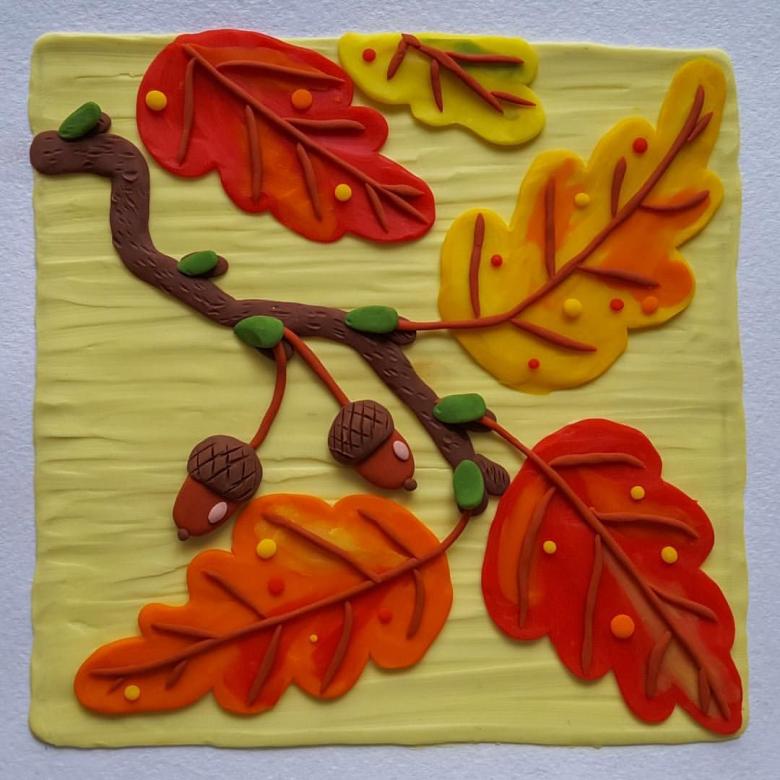
Solid coating
An interesting craft in the technique of smearing is suitable for the youngest children who are just mastering modeling with plasticine. As a basis, use a pre-printed drawing (you can take any picture from a child's coloring book) and soft and pliable plasticine for filling.

It is best to choose a quality product from well-known manufacturers, which does not leave greasy and colored marks on the hands of children. Drawing is filled in with plasticine along the contour, under the heat of the hands and light pressure, it should gently distribute over the entire area without going beyond the outlined contours.
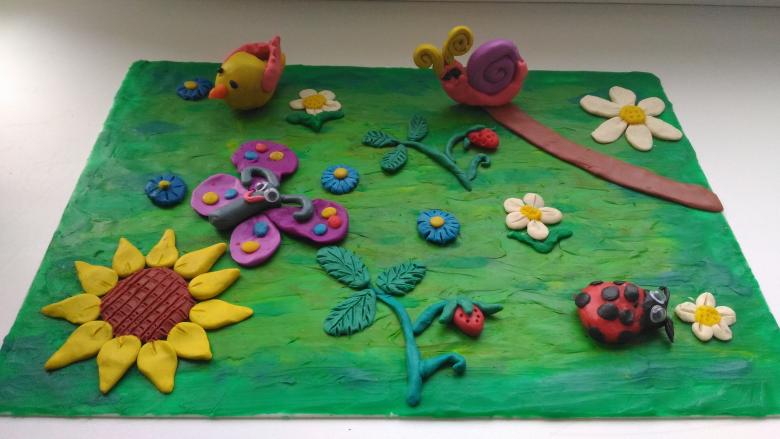
Quilling or flagellation
A realistic picture with a certain plot will turn out if you use not a thin layer of plasticine to fill the drawing, but the flagellum. They are prepared in advance, for this purpose plasticine of different colors is rolled into balls, which are gradually stretched into thin strips.

It is very easy to fill any space with flagellum, using the forward and reverse stacking technique. For figures with smooth lines (berries and fruits, animal figures) it is better to apply the technique of circular laying, the end of the flagellum is placed in the center and twisted in a spiral.
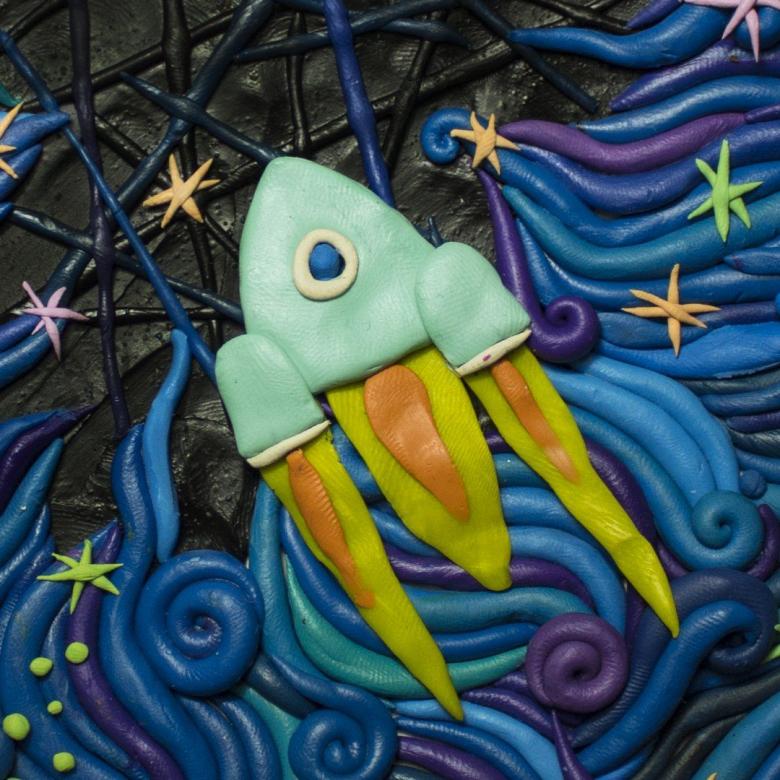
Plasticine mosaic
This type of creativity is very popular in kindergartens and it, too, requires a template with an interesting pattern for a child. The individual elements of the template are filled with small pieces of plasticine, which helps to completely cover the area and create a multicolored mosaic effect.

If you have a ready-made template, it is fashionable to combine different colors and shades of plasticine, applique can be created on cardboard or on glass. In this technique you can get beautiful cards for any holidays, and for the New Year you can decorate the windows of the house with mosaics, creating uninteresting and themed installations.
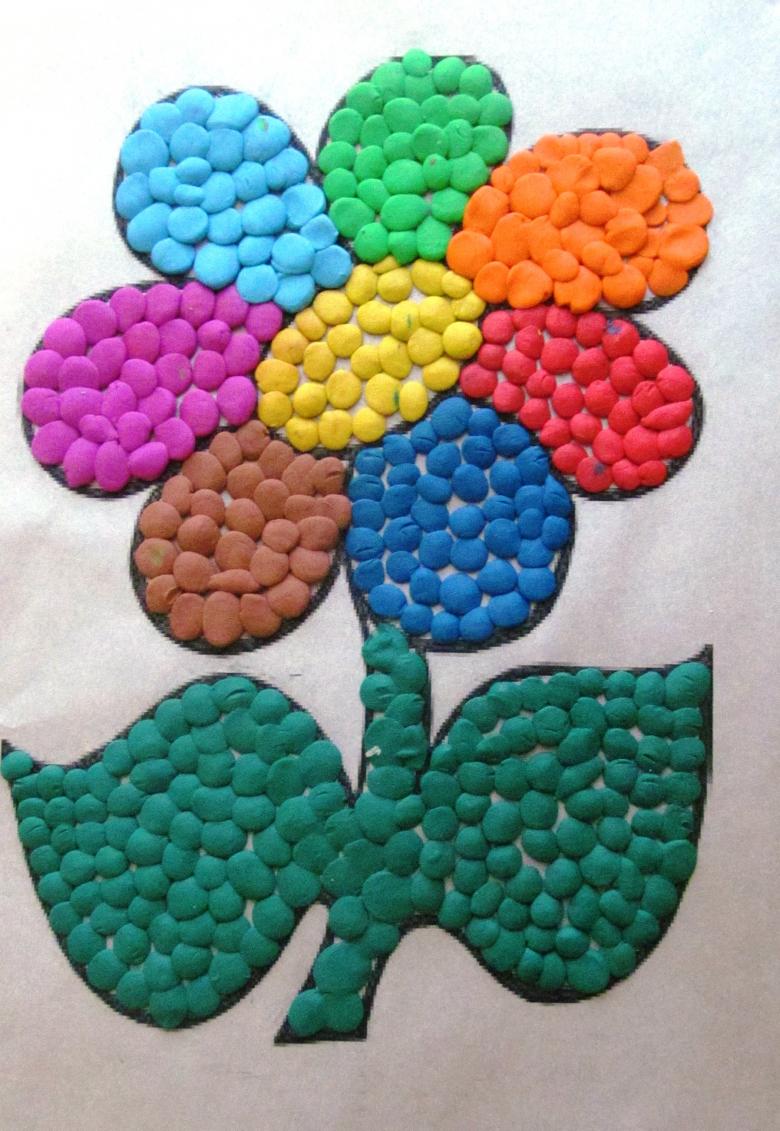
Simple volumetric applique
Using this technique, you can make a handicraft without a certain template, just not limiting children's imagination. Combining different techniques helps develop children's desire for creativity and self-expression, to create true masterpieces.

Simple tips for working in the technique of plasticine applique
The original plasticine decor will become a real decoration or an unusual handicraft, if you use a few simple tips:
- instead of a cardboard base for beautiful interior decorations, you can use improvised materials, such as plates or trays, photo frames and even computer disks;
- the technique of flagellum application can be facilitated by automating the process of making the flagellums themselves, for this plasticine is heated on the battery and placed in a syringe without a needle;
- classical plasticine can be replaced by inexpensive and more plastic air mass, after drying it does not leave greasy traces, and the crafts themselves become light and almost weightless.
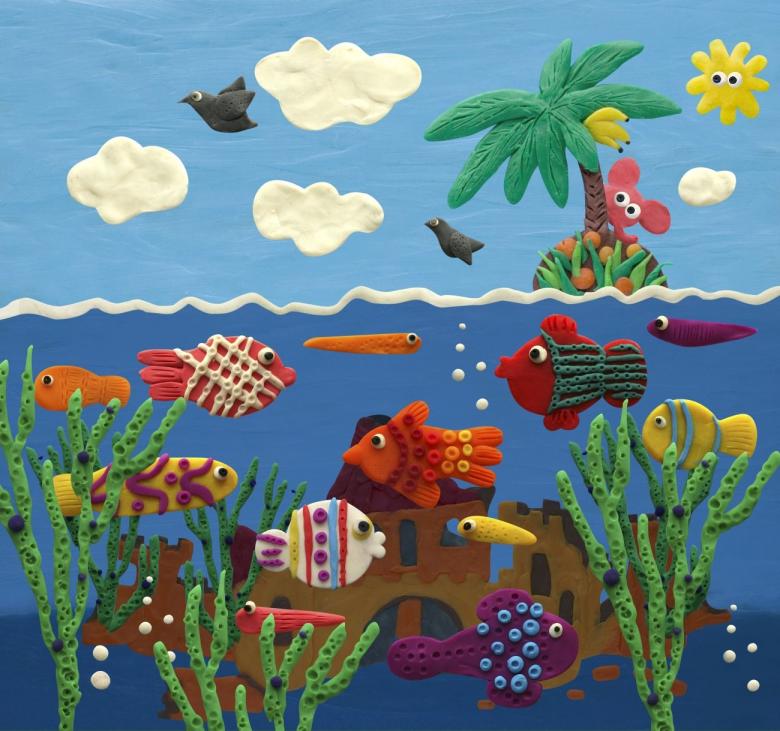
When choosing any model for a future craft, it is important to ask what the child will be interested in and what characters or characters he likes. In this case, the creative process will bring the little master a lot of fun, help develop his abilities and will never bore the child.
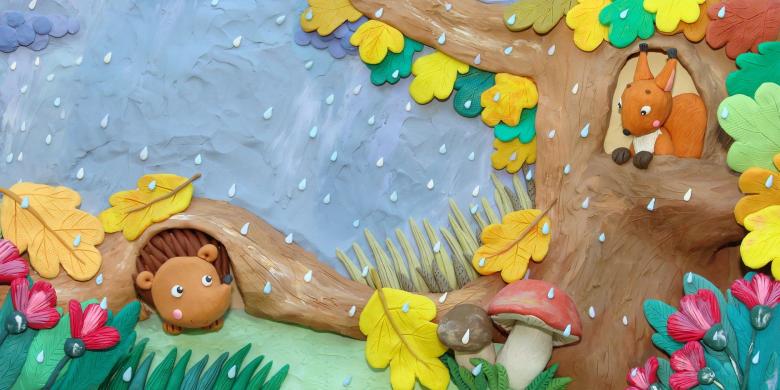
To implement the technique of plasticine applique does not require a special master class or special skills. Trying to make the first craft together with a child, parents will only need a little preparation and purchase of materials, and then you can not limit his imagination.

